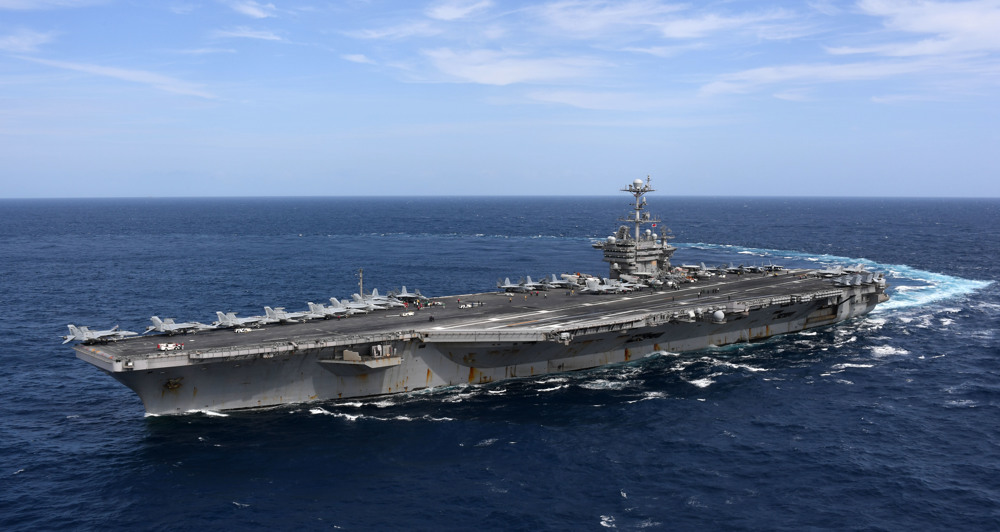Pentagon's new aircraft carrier may miss expectations
The Pentagon is reviewing the US Navy’s latest aircraft carrier, the USS Gerald Ford, fearing that the $12.9 billion warship would fail to perform as promised.
Under Secretary of Defense for Acquisition, Technology and Logistics Frank Kendall has recently told Secretary of the Navy Ray Mabus in a memo that the ship may need some changes to meet the Navy’s demands, American media reported Wednesday, citing a Navy official.
However, the official doubted that any changes were possible given that the carrier was scheduled for delivery in three months.
“With the benefit of hindsight, it was clearly premature to include so many unproven technologies,” Kendall wrote in the memo, which was first reported by Bloomberg News.
The USS Ford introduced a new class of US aircraft carriers that are slated to replace the current lineup of Nimitz class carriers.
“Capturing lessons learned and continuing to mature technology will be important to ensure follow-on ships proceed on schedule and budget,” said Commander Mike Kafka, a Navy spokesman.
Named after the 38th American president, the USS Gerald R. Ford runs on two nuclear reactors and is supposed to launch 25 percent more aircraft launches per day compared to the Nimitz class, while requiring 25 percent fewer crews.

The ship will be first deployed in 2019 and has a 50-year life span. It will replace the inactive USS Enterprise, which ended 51 years of active service in December 2012.
The decision to review the Ford was not the Navy’s only embarrassment this week as another Navy ship program, the Littoral Combat Ship, also ran into problems.
On Monday, the crews aboard the USS Coronado were forced to abort a trip in the western Pacific and return to Pearl Harbor after experiencing mechanical issues.
So far, four of Navy’s fleet of six Littoral Combat Ships have suffered engineering or design issues in under a year. The other two ships of this class have yet to be commissioned.
Back in June, Rear Admiral Peter Fanta, the Navy’s director of surface warfare, admitted that with the littoral ships program, the force had committed a strategic mistake by sacrificing speed in favor of firepower.
The US Navy’s extravagant strategies were taken to a whole new level in May, when it unveiled USS Zumwalt, its largest and most technologically advanced destroyer with an approximate cost of $4.4 billion.
Spain jurists demand ties with Israel ties be cut
VIDEO | Press TV's news headlines
VIDEO | Iran honors top Science Olympiad medalists
VIDEO | Austrians arrested at Gaza protest in Vienna
10 killed in bus crash in western Iran
VIDEO | One-man-band journalism with Civili
5 Israeli forces killed as Palestinian fighters face up to regime’s war machine
VIDEO | An insider's view of the country: Persian Tahini, Royan in Mazandaran










 This makes it easy to access the Press TV website
This makes it easy to access the Press TV website